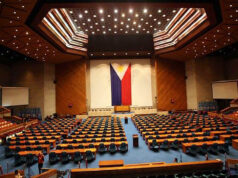Tighter watch on rice imports sought

FINANCE SECRETARY Carlos G. Dominguez III ordered the Bureau to Customs (BoC) to keep a closer watch on rice imports after the government temporarily reduced tariff rates.
In a statement on Monday, Mr. Dominguez said the country may experience a surge in imports from other countries that benefited from the temporary uniform rate of 35% in an attempt to avoid higher tax rates.
As rice prices from countries within the Association of Southeast Asian Nations (ASEAN) region have been increasing, Mr. Dominguez said there may be a shift to rice imports from other countries, such as India.
“I think there will be a shift in the imports of Thai and Vietnamese rice, and Burmese (Myanmar) rice, to rice from other countries where the value is much lower. Just keep an eye on that,” Mr. Dominguez told Customs chief Rey Leonard B. Guerrero.
Mr. Guerrero said that the BoC is looking at the discrepancy seen in some rice imports from Vietnam where the bulk of shipments were declared at values lower than prevailing market prices.
“We discovered that many of these importations are under a tentative assessment so we are reviewing the payments,” he said.
In May, the average value of rice imports, mostly from Vietnam, fell by 12.7% to P19,312 per metric ton (MT) versus P22,119 per MT in the same month last year, Mr. Guerrero noted. This was also lower than the P21,066 per MT average recorded in April and P22,119 per MT in March.
President Rodrigo R. Duterte issued Executive Order No. 135 on May 15, cutting the most-favored nation tariff rates for rice to 35% from 40% for in-quota and 50% for out-quota volumes for a year. The move is aimed to boost local rice supply and tame rising inflation.
The BoC collected P5.67 billion in rice tariffs from January to April, higher by 3.7% than the P5.46 billion it generated in the same period last year.
Customs’ revenues from rice imports increased even as the volume of shipments shrank by 9.2% to 804,360 MT. Mr. Guerrero attributed this to the bureau’s better valuation, with the average value of rice imports rising 14% to P21,096 in the first four months of the year versus a year ago’s P18,508 per MT.
To recall, the BoC in September 2020 revealed that the government lost P1.42 billion in revenues due to under declaration by several importers to evade tariffs.
For Federation of Free Farmers (FFF) National Manager Raul Q. Montemayor, the BoC has been very slow in plugging the loopholes in their valuation and classification of rice imports.
Mr. Montemayor said the bureau has not yet posted the reference rates for rice shipments from China, and some from India, Pakistan, and Myanmar.
“Without reference prices, they will not be able to determine which shipments are undervalued or not. I do not see why DoF has to issue a special reminder to BoC just because the tariff rates have been set to a uniform rate,” he said in a Viber message on Monday.
“In fact, this should make the job of BoC simpler. And the risk of undervaluation and misclassification will still exist whether the tariff rates are changed or remain the same,” he added.
The FFF earlier criticized the government’s move to lower the tariff rates for the staple, citing the policy’s lack of basis and ample rice supply in the local market.
“We believe that this will not result in lower prices for consumers, since importers will just pocket the savings in tariffs. At the same time, (this) could threaten to dampen palay prices much to the detriment of rice farmers,” Mr. Montemayor said. — Beatrice M. Laforga



